Today’s adventure took us 30 miles west to Meteor Crater. This was also an item on my bucket list even though I had been told it was very touristy.
First some information:
“About 50,000 years ago, a rock fragment broke away from the asteroid belt and hurtled towards earth. The rock, composed of nickel and iron, was about 50 meters across and weighed 300,000 tons. It was travelling at 40000 miles per hour. Upon entering the earth’s atmosphere it became a giant fireball that streaked across the North American sky. When it crashed into the plains of Arizona, it exploded with a force equal to 10 megatons or about 150 times the force of the atomic bomb that destroyed Hiroshima.
The violence of the impact vaporized the meteorite leaving little residue, but millions of tons of limestone and sandstone were blasted out covering the ground for a mile in every direction. When the dust settled, what remained was a crater over three quarters of a mile across and 750 feet deep. The impact occurred during the last ice age, a time when the Arizona landscape was cooler and wetter. The area was an open grassland dotted with woodlands inhabited by woolly mammoths and giant ground sloths. The force of the impact leveled the forest for miles around, hurling the mammoths across the plain and killing or severely injuring any animals unfortunate enough to be nearby.
As the landscape recovered, a lake formed in the bottom of the crater, and sediments accumulated until the bowl was only 550 feet deep. When the ice age ended, the climate changed and dried, preserving the crater from further erosion.
The crater has been named the Barringer Crater in honor of Daniel Barringer, who was first to suggest that it was produced by meteorite impact. It is also referred to simply as "Meteor Crater". The crater is located approximately 69 km east of Flagstaff, near Winslow in the northern Arizona desert of the United States. It is the largest impact crater yet discovered in the United States, and one of the best preserved on earth. Today the crater is about 1,200 meters in diameter, some 170 meters deep and is surrounded by a rim that rises 45 meter above the surrounding plains.
The origin of this crater has been a source of controversy for many years. Initially, the scientist community believed that such a crater cannot exist arguing that all natural landforms had been created slowly, over thousands or even millions of years, rather than in a single catastrophic moment.
Barringer, a mining engineer and businessman, was one of the first people to claim that the crater was the result of an impact, contradicting the most eminent scientists of his time. He was convinced that an iron-nickel core over 10 million tons lay beneath the floor of the crater, and in 1928, raised $200,000 from an investor promising a profit of $250 million on a mere half million dollar investment. But when the mine shaft hit nothing but water, an astronomer was consulted for his opinion on the size of the meteorite.
The astronomer F. R. Moulton calculated that the size of the meteorite to be 300,000 tons, or only 3% of the amount claimed by Barringer, and too small to justify any further drilling. In addition, Moulton argued that the energy of the impact would have resulted in the total vaporization of the meteorite itself.
Work on the mine was halted. Barringer lost nearly all of his own fortune, along with hundreds of thousands entrusted to him by his investors. Devastated by the loss, Daniel Barringer died of a massive heart attack on November 30, 1929.
It was not until 1960 that later research by Eugene Merle Shoemaker confirmed Barringer's hypothesis. The key discovery was the presence in the crater of the minerals coesite and stishovite, rare forms of silica found only where quartz-bearing rocks have been severely shocked by an instantaneous overpressure. It cannot be created by volcanic action; the only known mechanism of creating it is through an impact event.
Shoemaker's discovery is considered the first definitive proof of an extraterrestrial impact on the Earth's surface. Since then, numerous impact craters have been identified around the world, though Meteor Crater remains one of the most visually impressive owing to its size, young age, and lack of vegetative cover.
Meteor Crater is today a popular tourist attraction privately owned by the Barringer family through the Barringer Crater Company. There is a Visitor Center on the north rim that features interactive exhibits and displays about meteorites and asteroids, space, the solar system and comets. It also features a 1,406 pound meteorite found in the area, and meteorite specimens from Meteor Crater that can be touched. “
Barringer Crater official website
These photos were from the website.
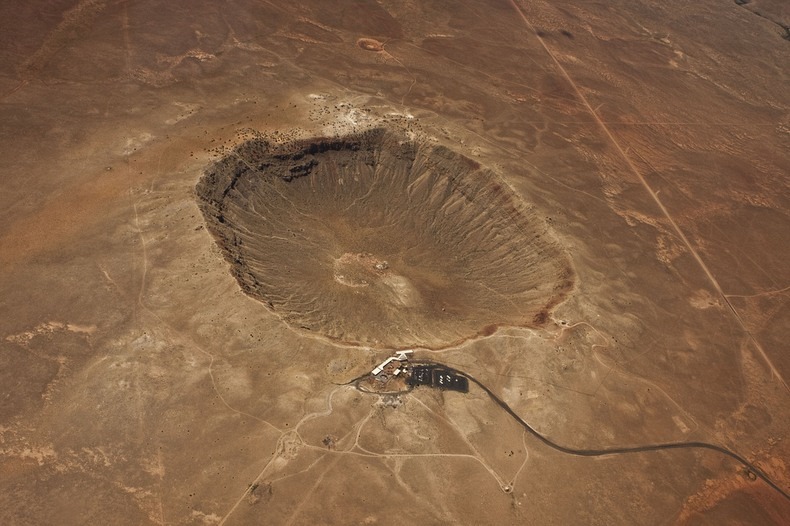
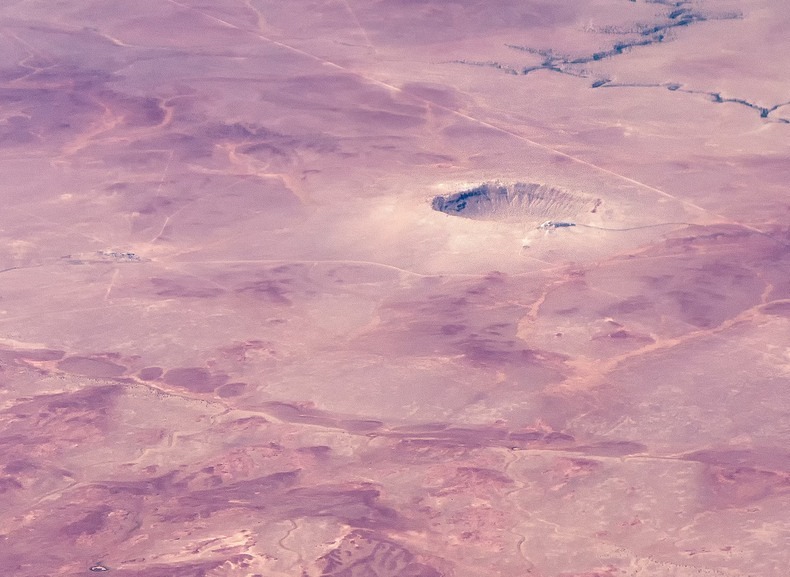
I know… lots of information but I do have my own pictures – ![]() .
.
When we arrived we went to see the 10 minute movie “Impact” – for an overview of what happened at Meteor Crater. We wanted to go on the guided hike at 11:15 so we just hung out at the museum until the hike started.
The guided hike takes about an hour and the hike is on the rim of the crater. The hike is 1 mile overall with various stops along the way. Our guide told us of the history of the crater and the land that surrounds it plus all the geology involved – it was great!
Our guide was part Navajo and part Apache and one of the questions asked was “Were there any oral histories or stories about the crater in the Native cultures?”. Apparently there is not BUT there is no sign of the Native Americans in this area. Yet there is a lot of evidence about 20 miles in each direction. Our guide believes that the Natives considered this an evil place, therefore, did not talk about it nor come near it. Very interesting.
Okay, so here are some pictures.
The trail – only accessible with a guide:
Meteor Crater:
This was originally Barringer’s House and then the first visitor center:
We first thought this was a mine but it was actually a storage shelter:
The meteor caused a great overturning of the soils/rocks. The red rocks are the youngest rocks and should be on top of the others:
According to our guide, the rock layers of this part of Arizona lay on top of each other. In this picture you can see how the rocks are “pushed” upwards. (I really wish I knew more about geology!)
Guess who?
This is called house rock because of it’s size (Big as a house – ![]() ):
):
See the white spot? This is the tail of a Cessna 150. On August 8, 1964, a pair of commercial pilots flew low over the crater. After crossing the rim, they could not maintain level flight. The pilot attempted to build up speed by circling in the crater to climb over the rim. During the attempted climb out, the aircraft stalled, crashed, and caught fire. Both occupants were severely injured but survived their ordeal. Part of the plane remained and the rest was put down the mine shaft.
Some of Barringer’s mine shafts. If you can enlarge the photo, you can see the entrance by the tailings:
This is the bottom of the Crater. On the far right there is one of the mine shafts. The two black “things” on the left are the steam boiler and a winch.
Can you see it?
Another tour on the rim:
There are three overlooks by the Visitor Center. Here are some views from those overlooks:
And a panoramic video too:
05 01 14 Meteor Crater AZ 106a
What we found interesting is that many small fragments of the meteor were found scattered beyond the Crater:
More interesting tidbits:
If you are in this area, I would recommend a stop BUT… make sure you take the guided tour and see the two movies. We learned so much from our guide. (Also Google for a coupon – there is always a $2.00 on the web – ![]() ) We were told this was a tourist trap and it can be without the guided tour and movies.
) We were told this was a tourist trap and it can be without the guided tour and movies.
Another interesting day – ![]()
Enjoy today!
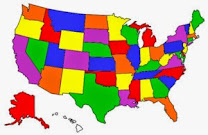


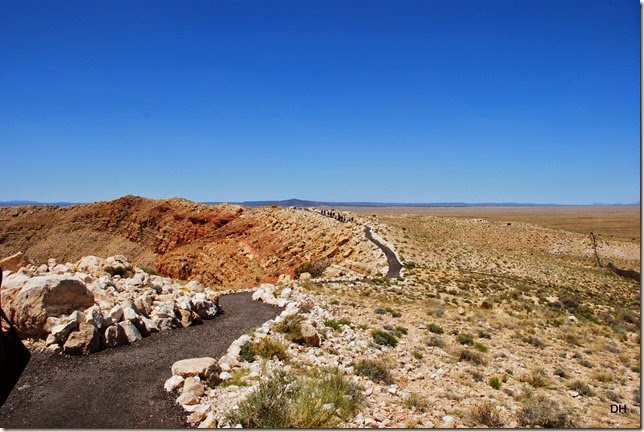
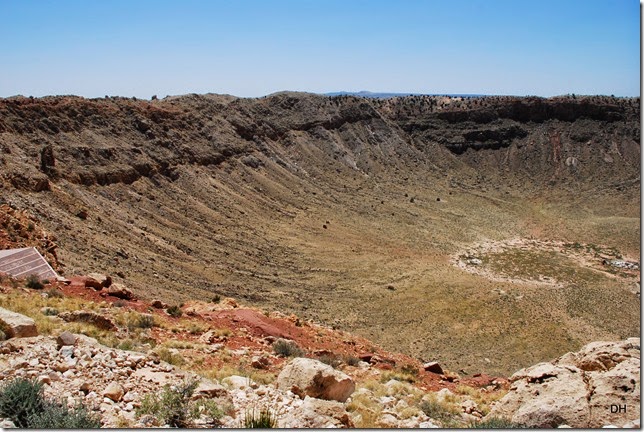
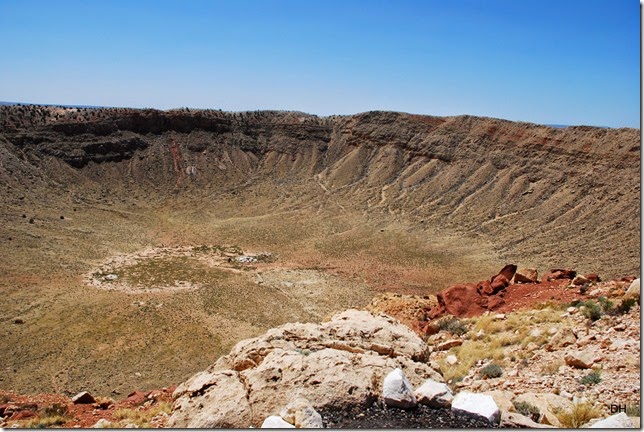
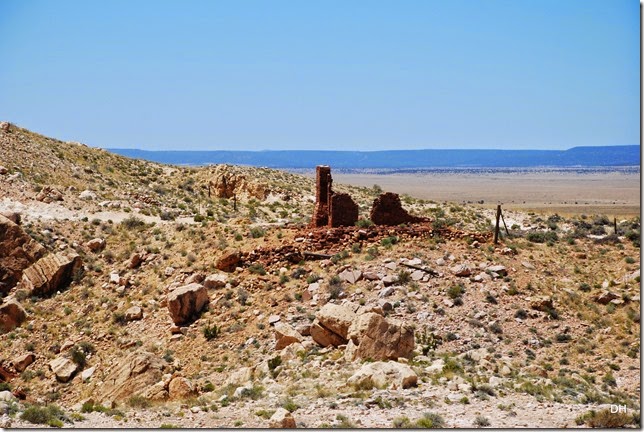

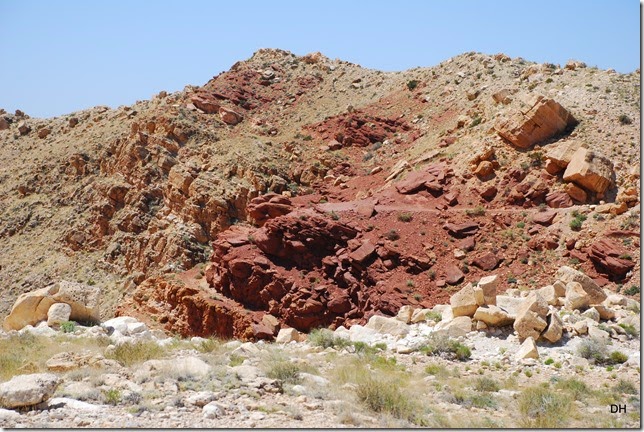
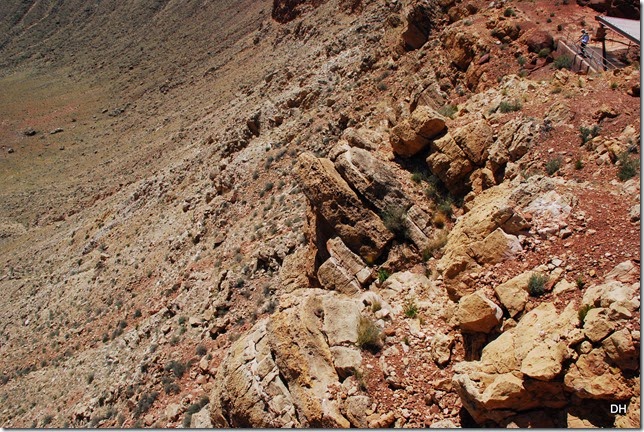





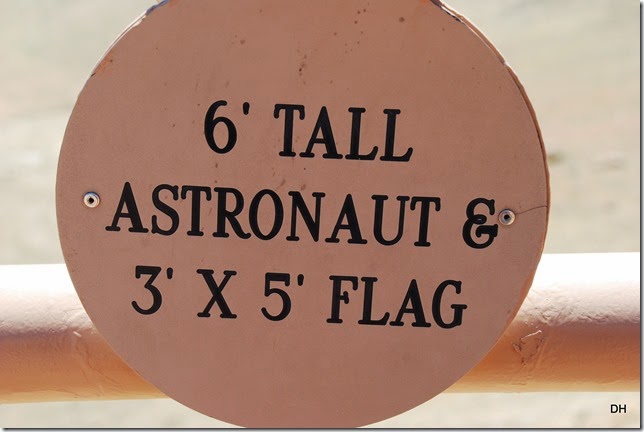
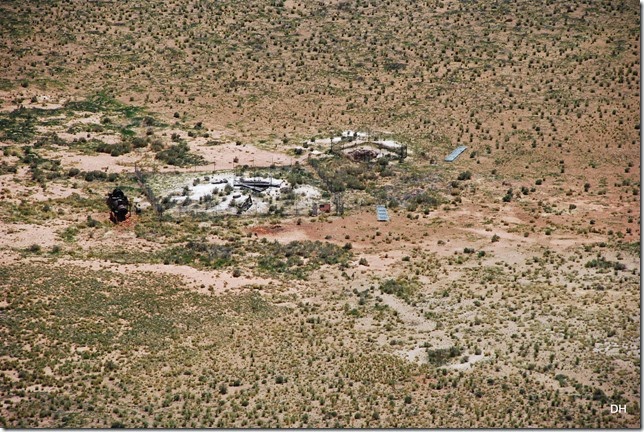
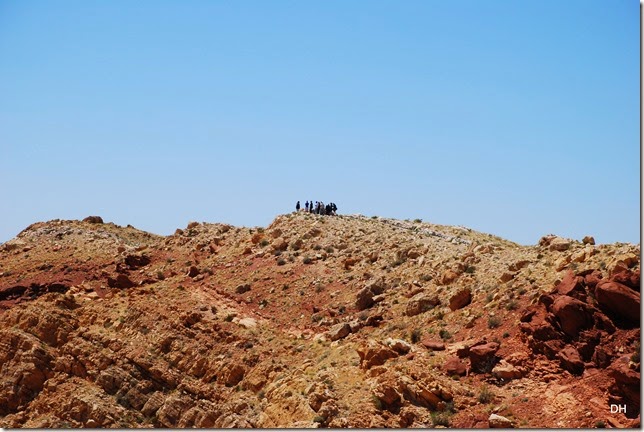
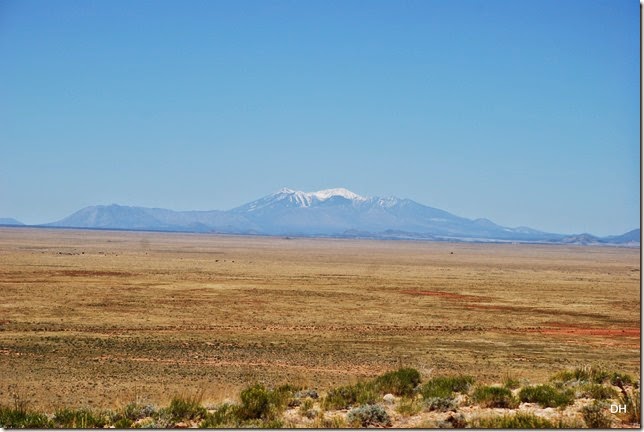
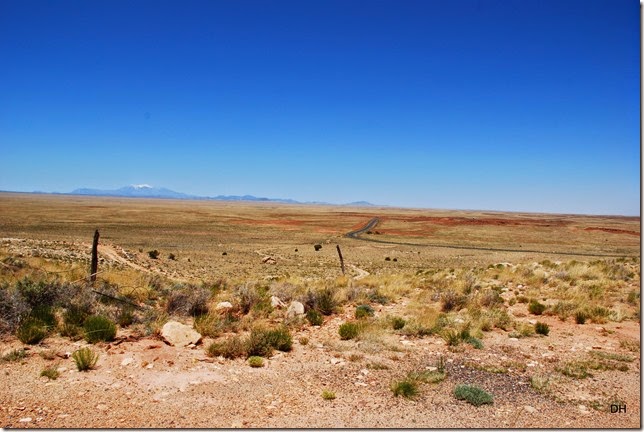
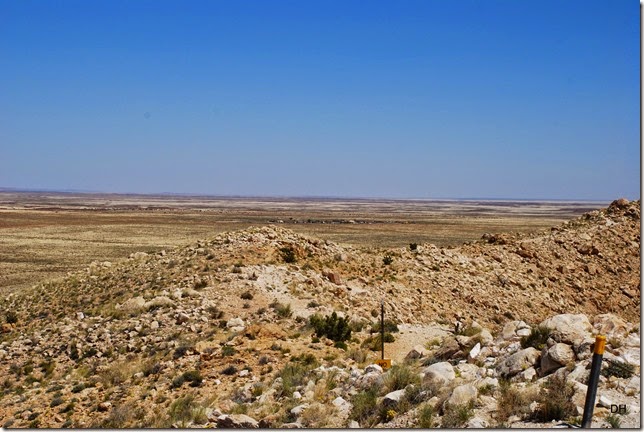
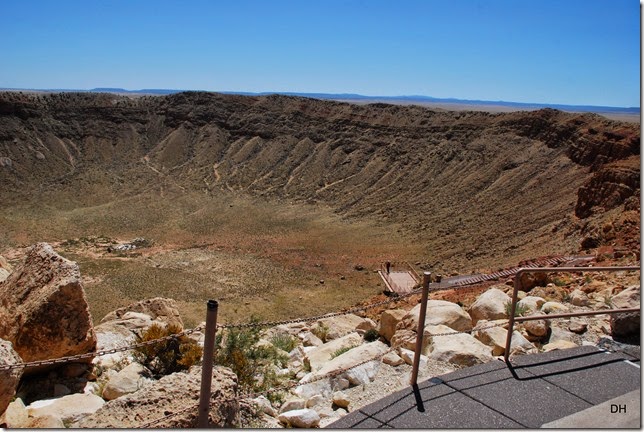
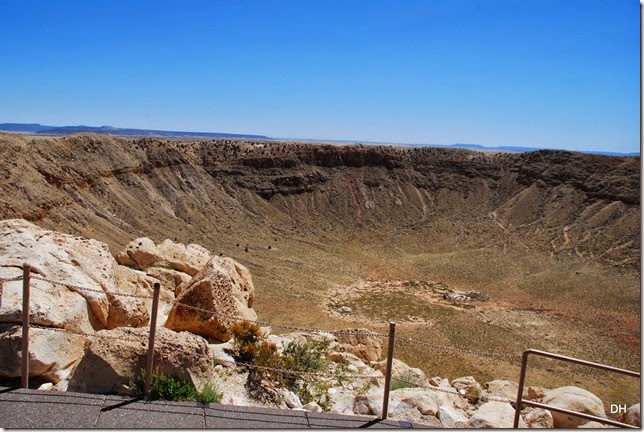




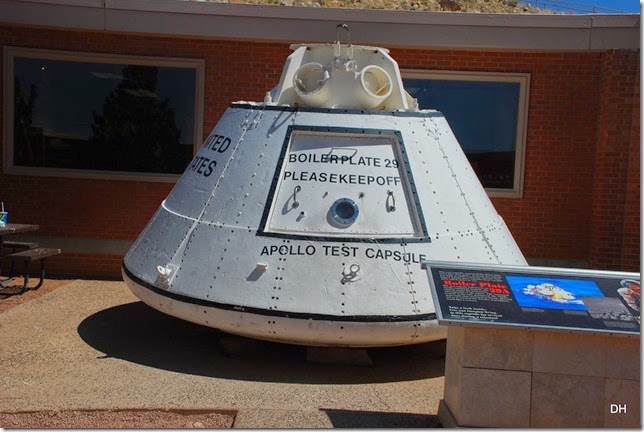



2 comments:
I would certainly stop to take that tour if I were in the area.
Thank Judy, It is worth a stop - :-)
Post a Comment